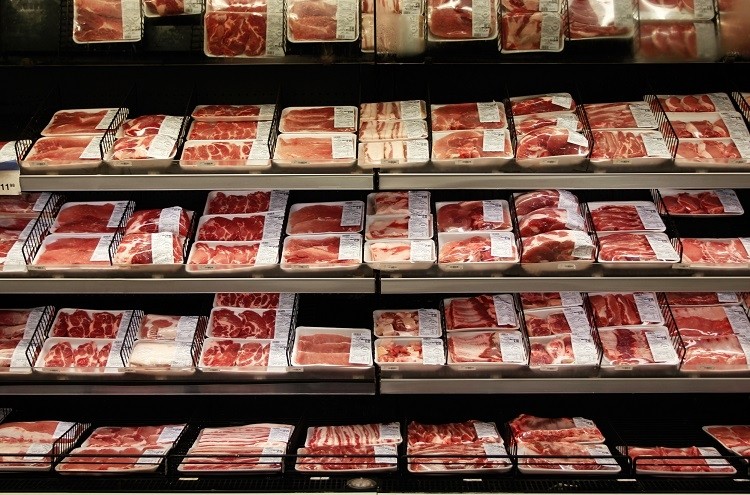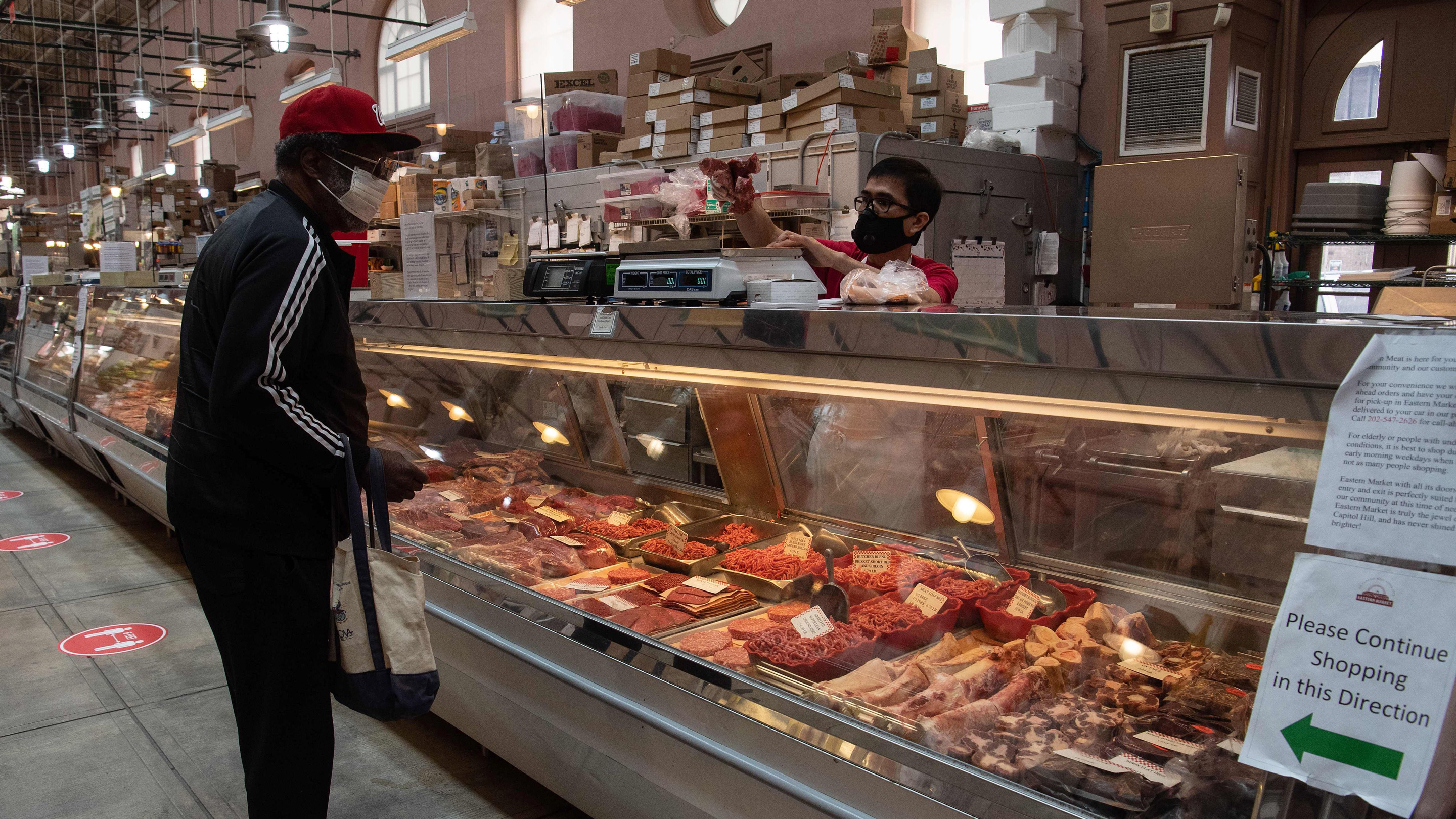Bagley Farms Meat Market Edwardsville IL: Your Trusted Source for High-Quality Meats
Bagley Farms Meat Market Edwardsville IL: Your Trusted Source for High-Quality Meats
Blog Article
Reveal the Art of the Butcher's Cut in a Modern Meat Market
In the ever-evolving landscape of modern-day meat markets, the butcher's cut has actually transcended its standard roots, merging old-time workmanship with contemporary practices. Today's butchers are not just cpus of meat; they are educated craftsmens who highlight sustainability and ethical sourcing. Their competence in picking and preparing cuts tailored to specific cooking requirements provides an unequaled dining experience. Yet, what truly sets the modern butcher apart is their capacity to create a deeper link between consumers and the beginnings of their meat. How do these masters equilibrium tradition with technology, and what ramifications does this have for the future of meat consumption?
Evolution of Butchery Methods
The advancement of butchery methods mirrors a rich tapestry of technology and adaptation driven by developments in modern technology, changes in customer demand, and a much deeper understanding of meat science. Historically, butchery was a craft passed down via generations, with approaches honed over centuries to take full advantage of yield and taste. Nevertheless, the commercial change ushered in mechanization, changing conventional methods and allowing massive handling.
The mid-20th century saw butchery strategies further fine-tuned by clinical insights into muscle biology and meat aging, improving both inflammation and preference. Innovations like vacuum packaging and refrigeration prolonged item shelf-life, permitting butchers to expand offerings and improve quality control. This period likewise noted the increase of customized equipment, such as band saws and meat slicers, which enhanced precision and effectiveness in meat processing.

Computerized systems currently aid in tracking animal provenance and optimizing cuts to meet details client preferences. In addition, a revival in artisanal butchery has arised, blending conventional abilities with contemporary knowledge to provide to consumers looking for ethical and lasting meat options.
Understanding Meat Cuts
Understanding the details of meat cuts is important for both butchers and customers looking for quality and value. For butchers, exact cuts show ability and respect for the craft, making sure marginal waste and optimum yield.

Understanding muscular tissue make-up is critical; muscles used extra often by the animal often tend to be tougher and are best suited for slow-moving cooking methods, while less-used muscles, like those found in the loin, are extra tender and suitable for cooking or roasting. Experience with these distinctions encourages customers to make informed options, enhancing their cooking endeavors.
Picking Quality Meat
Picking the great site best meat entails greater than simply choosing an aesthetically appealing item from the display. bagley farms meat market edwardsville il. The art of choosing quality meat calls for a discerning eye and expertise of specific qualities that signify quality and quality. First of all, pay focus to the color; beef should have a brilliant, cherry-red hue, while lamb ought to show a soft pink tone, and pork a pale pink. This indicates the Going Here meat is fresh and hasn't been subjected to oxygen for as well lengthy.
Secondly, think about the marbling, which describes the white streaks of fat within the muscle. Proper marbling is a crucial indication of inflammation and taste, as it thaws throughout cooking, enhancing the meat's juiciness. Keep in mind, greater marbling usually correlates with premium quality cuts, such as USDA Prime.
Texture is another crucial aspect; meat must really feel solid to the touch, not slimed or excessively soft. Furthermore, be conscious of the fragrance. Fresh meat must have a clean, neutral smell, devoid of any type of sour or off-putting odors.
Pairing Cuts With Cooking Approaches

On the other hand, harder cuts like brisket and chuck roast are rich in collagen, which damages down right into jelly when prepared gradually. These cuts are suitable for braising or slow-moving roasting, permitting the meat to tenderize over time and establish deep, complicated tastes. Cuts such Web Site as short ribs and pork shoulder get on well with slow-cooking techniques, where expanded cooking times change their durable appearances right into delicious recipes.
Lamb shanks and oxtail, which call for long term food preparation to soften, are perfect candidates for cooking or sluggish simmering. These techniques coax out rich, passionate tastes while preserving wetness. By recognizing the distinct attributes of each cut, chefs and home cooks alike can elevate their culinary productions, ensuring each recipe is both pleasing and unforgettable.
The Butcher's Role Today
Browsing the progressing landscape of the modern meat market, the butcher's duty today prolongs past simple preparation of cuts. Contemporary butchers are cooking artisans, instructors, and advocates for sustainable methods. They bridge the void in between the ranch and the fork by guaranteeing moral sourcing, comprehending pet husbandry, and focusing on transparency in the supply chain. This change reflects the growing customer demand for high quality over amount, where provenance and pet well-being are paramount.
In addition to crafting precise cuts, butchers now involve directly with clients, supplying cooking recommendations and customizing selections to fit specific needs and preferences. Their experience in meat aging, marbling, and flavor profiles encourages customers to make informed choices, boosting their culinary experiences. This individualized service exemplifies the butcher's advancing duty as a trusted consultant in the cooking area.
Moreover, butchers are critical in lessening waste, making use of entire animals to produce varied items such as sausages and supplies. This comprehensive method not only appreciates the pet yet additionally aligns with contemporary sustainability goals. In this method, the modern-day butcher personifies both tradition and innovation, adapting to an ever-changing market while maintaining the virtuosity and integrity of their craft.
Final Thought
The contemporary butcher's craft elaborately weaves standard techniques with contemporary technologies, stressing lasting techniques and honest sourcing. Proficiency in recognizing varied meat cuts and top quality signs equips butchers to supply educated suggestions, lining up particular cuts with optimum food preparation techniques. This proficiency not just boosts cooking experiences but additionally strengthens the connection between consumers and the origins of their food. By recognizing historic methods while embracing modern needs, the butcher's duty stays crucial in today's innovative meat market (bagley farms meat market edwardsville il).
Report this page